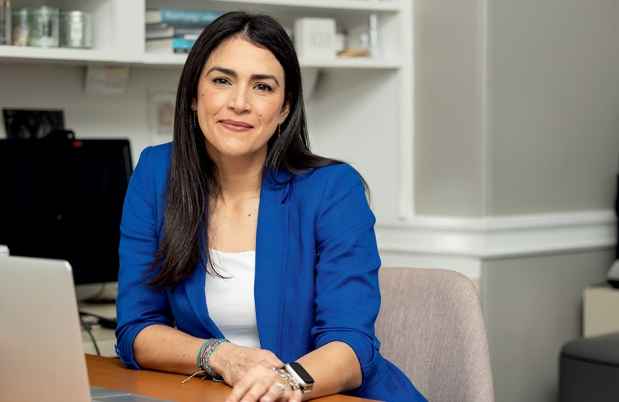Suicide Prevention: Learning From Someone Affected by Suicide
Available with English captions and subtitles in Spanish.
Jill Harkavy-Friedman, PhD, American Suicide Prevention, speaks with an individual whose life has been affected by the loss of a family member to suicide as part of the 2023 Suicide-Focused Assessment and Treatment: An Update for Professionals course.
Jump To
Life After Loss
Jen describes her life as divided into two parts: “before Teddy died, and after.”
When Jen’s brother Teddy died by suicide at age 41 in May 2017, Jen felt she had to be strong for the sake of their parents. She tried so hard to be strong for the rest of her family that she did not process any of her own feelings.
Watch now to learn more about:
- The impact of suicide on surviving family members
- What inspired Jen to get help
- Which factors help Jen heal
“My life was shattered,” Jen says. “My marriage suffered. My relationship with my parents suffered. My kids all struggled. I struggled, but none of us spoke about it.”
For the first few years after Teddy’s death, Jen was fueled by rage. She was angry at everyone and everything, “from my brother for leaving to the lady at the grocery store.”
Jen did not recognize that the anger she felt was actually grief. She stayed up at night, numbing her emotions with television and food. During that period, she gained 100 pounds.
Then, the pandemic hit. With the rest of her family now at home with her, Jen realized she could no longer sit by herself in anger. At one point, just to be alone, she left the house and went for a walk. She realized she felt better with just that bit of activity, but she also realized she wasn’t okay.
That moment inspired her to seek therapy. Through telehealth, Jen talked through her feelings and addressed many of the cognitive distortions that blocked her path to healing, such as her beliefs that she had failed her brother and that she did not deserve to participate in life.
She joined a suicide loss survivors support group, where she realized she was not alone.
“All of these things that I was feeling and were making me feel confused … everyone else was feeling similar things,” she says.
Jen also channeled her love of exercise into an event that was important to her brother: The Boston Marathon. Since Teddy loved to volunteer for Marathon Monday, Jen applied to run the event through the American Foundation for Suicide Prevention (AFSP).
Jen continues to be active, both through running and through her advocacy work.
When she struggled with her own suicidality at the six-year anniversary of Teddy’s death, she asked her therapist for help through the crisis. She credits her work in advocacy with her comfort level in being able to talk about suicide.
“My grief journey has been public,” she says. “Without reservation, without guardrails, I share how I’m feeling.”
She frequently posts on social media about her experiences. She also offers resources for support.
People often message Jen to let her know they needed to hear what she had to say. They appreciate her openness, which lets them know it is okay to talk about suicide and loss.
Through her own experience, Jen has realized that grief does not follow a linear pattern.
“I have many feelings all the time,” she says. “It’s like back and forth and circles. I can feel them all at once, or nothing.”
“It’s been six years now,” she adds. “There are some days I would consider myself healthy. And then there are other days where it feels like I’m back on that day in May. It just depends. How you carry it changes, and how you manage those feelings changes, but only if you get support.”
Resources
You may find this additional information helpful:
- American Foundation for Suicide Prevention
- Deconstructing Stigma – Jessika’s story
- Suicide: Know the Signs and What To Do
- Everything You Need To Know About Grief and Loss
- Video: Overview of Adolescent Suicide
- Video: Suicide – Basic Facts
- McLean’s suicide prevention resource hub
- Access to the full 2023 Suicide-Focused Assessment and Treatment Course
Learn more about the Current Status of Suicide-Focused Assessment and Treatment
About Jill Harkavy-Friedman
Dr. Jill Harkavy-Friedman is the senior vice president of research at the American Foundation for Suicide Prevention. She leads AFSP’s research program, which funds research grants, offers workshops and training to researchers, and disseminates research findings to increase public awareness and support advocacy.
Dr. Harkavy-Friedman has published over 100 peer-reviewed articles and trained clinicians around the nation. In 2022, she was selected to be a fellow of the American Association for the Advancement of Science.



